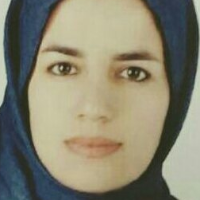A Study on the Visual Origins of Saqātālār paintings (With an Emphasis on Lithography)
The main problem of this research is the quality of influencing some traditions as parda, glass gilding, tea-house painting, wall paintings in sacred monuments as well as the lithograph books on the emergence of the Saqātālār paintings in Qajar period, Māzandarān, Iran; Saqātālār is a wooden building found exclusively in this area of the country. The research purpose is finding the historical relationships between these artistic genres more accurately. They have been not profoundly referred as the origin and the root of the Saqātālār paintings. The Peter Chelkowski's theories on the narrative paintings and painting recitation, their roots and origins, the challenges existed about the exact date of making the first sample of narrative religious wall paintings in Iran would be helpful in this regard. Two significant groups of religious and non-religious themes have been represented simultaneously in the context of Saqātālār paintings. This synthesis seems to be slightly incongruent at first glance so that we cannot remember any similar examples of being gathered these different motives in their introduced origins. It is why the synthesis is considered to be a unique and unprecedented case. For this reason an extensive study on all these artistic genres, their background, their first samples, contents and themes and also their relations with the Saqātālār building would be necessary. The research hypothesis is the possibility of the exact representation of the lithograph illustrations in the Saqātālār paintings. At first glance, we can see a lot of similarities between the illustrations of lithograph books and the motives on the Saqātālār building, in terms of both the visual features and themes . The authors assess the seventeen painted and dated Saqātālār in addition to the above said origins, in terms of their dates, their involved people as well as their themes through an historical approach. The research method is the qualitative content analysis of historical resources along with the field work in Māzandarān province and its villages. The certain result of the study indicates the significant similarity between the most of Saqātālār paintings and the illustrations of Qajar lithograph books as well as the presence of a considerable extent of Saqātālār themes in them; however, the absence of colour in lithograph books is the only difference between the two. Also, with regard to Saqātālār buildings, their location, their certain relations with the religion and the other religious buildings around them, the specific paintings, the particular colors and their specific techniques of drawing these motives, one might observe a set of the unique features here which have been continuously invariant among all the influences mentioned above. In addition, they are belonged to a certain period of time and have been constructed and painted by a specific group of people; All these issues might give a unique identity to Saqātālārs we can name them an artistic "Style". Finally, the historical data indicates a kind of relationship between the founders of these buildings and the Qajar capital and court which might make doubt about the authenticity of some presumptions.
-
Approaches to Islamic Art in the Museums: A Critical Review on “Islamic Art and The Museum; Approaches to Art and Archaeology of the Muslim World in the Twenty-First Century”
*, Kouros Samanian
Critical Studies in Texts & Programs of Juman Sciences,



